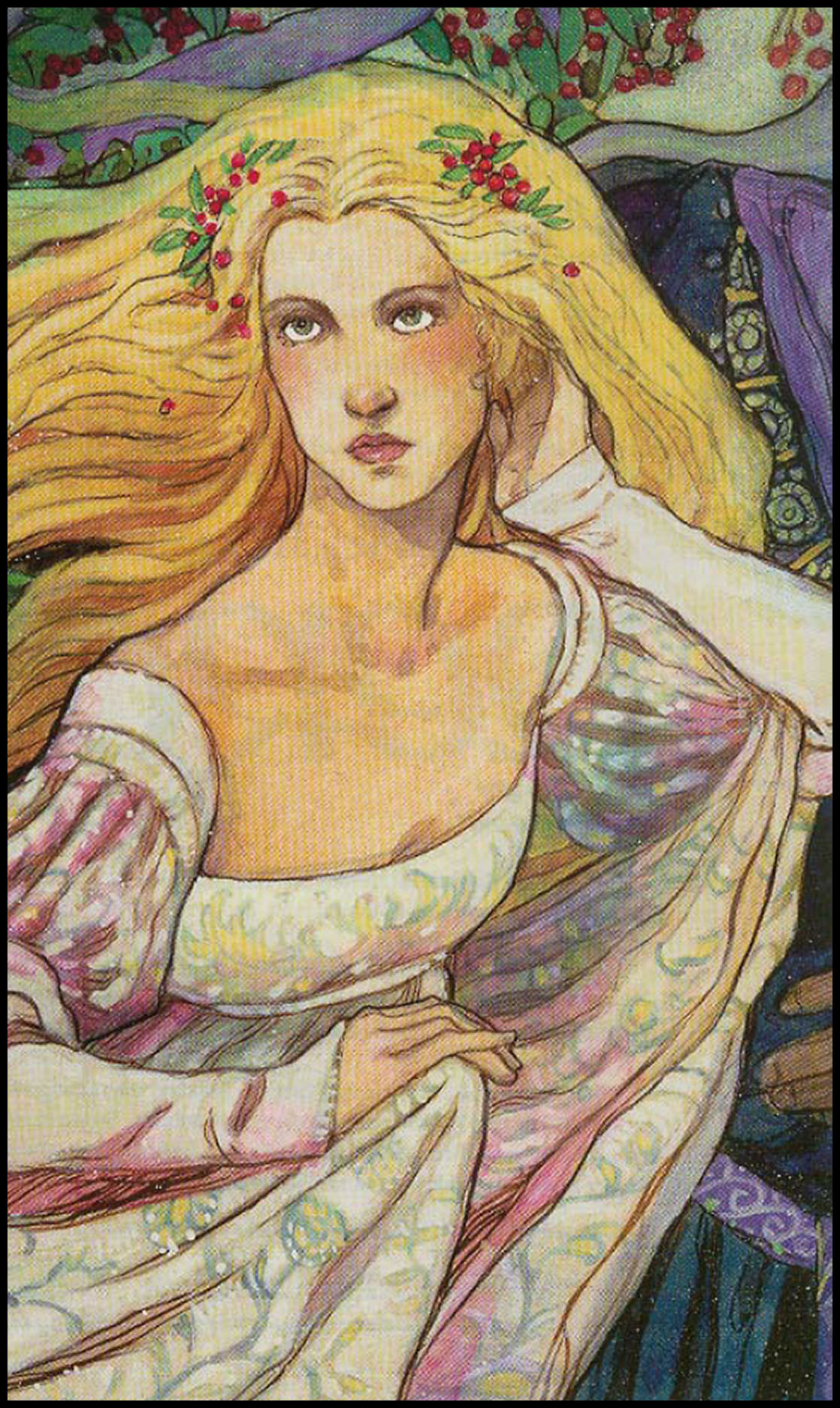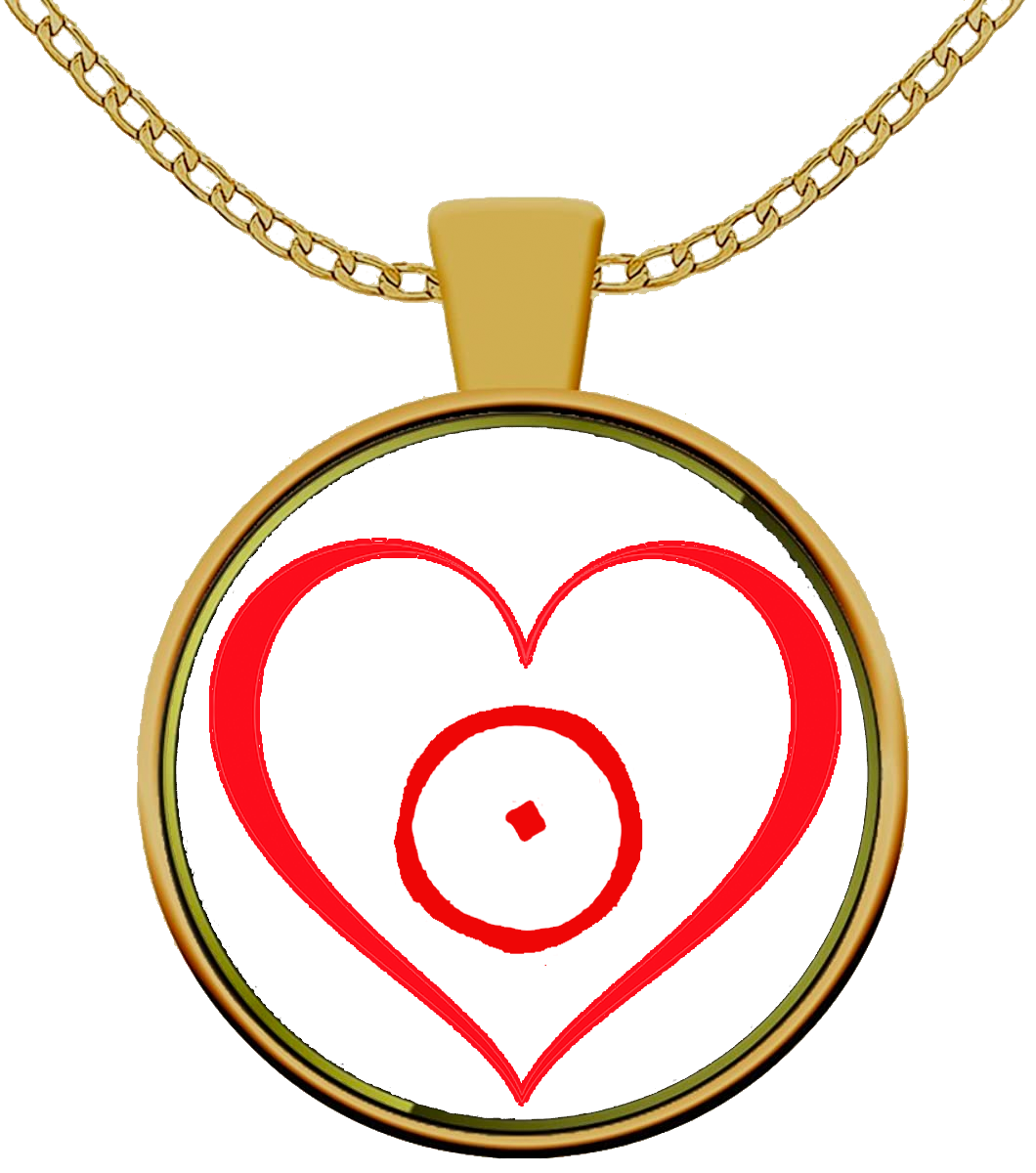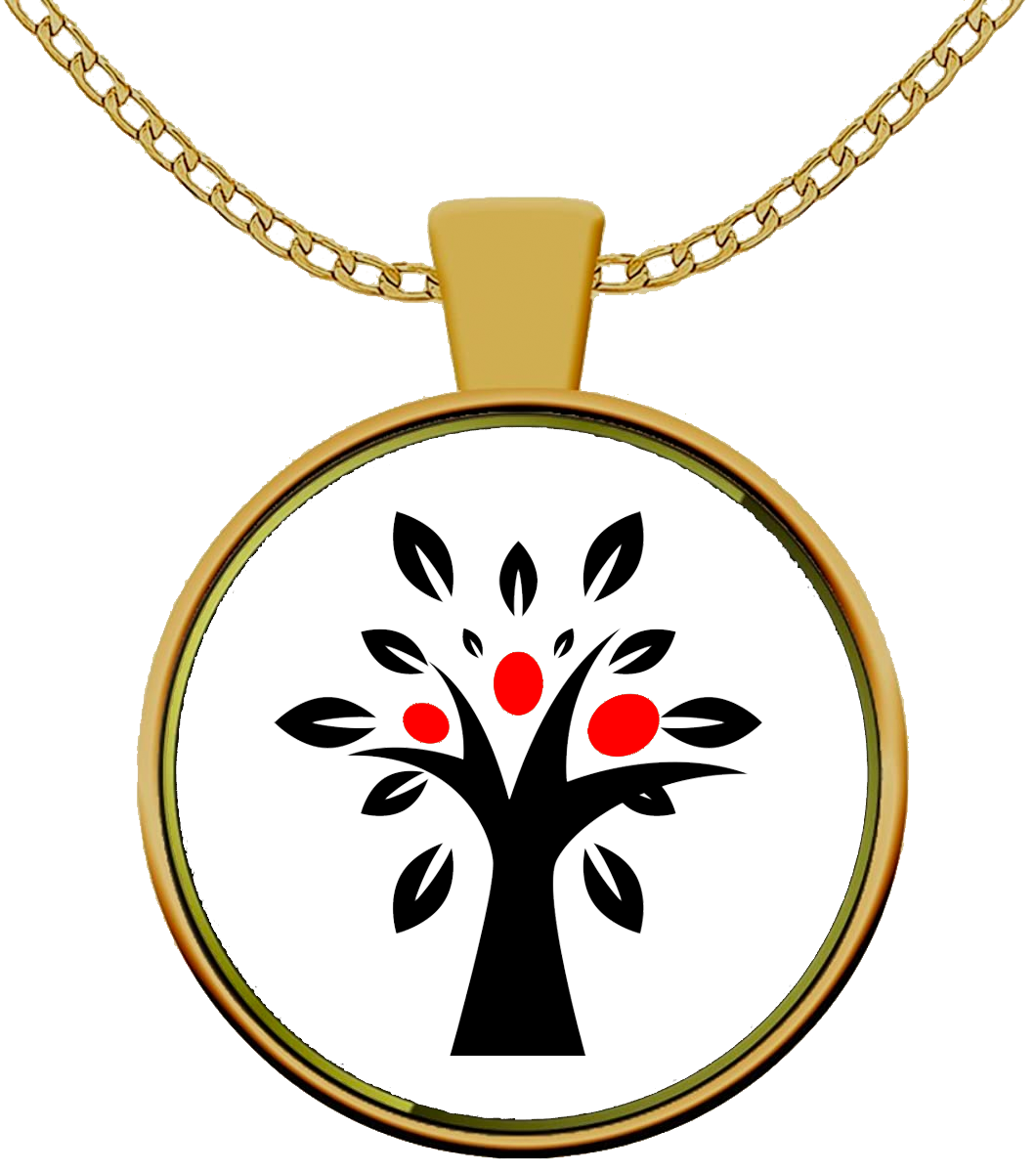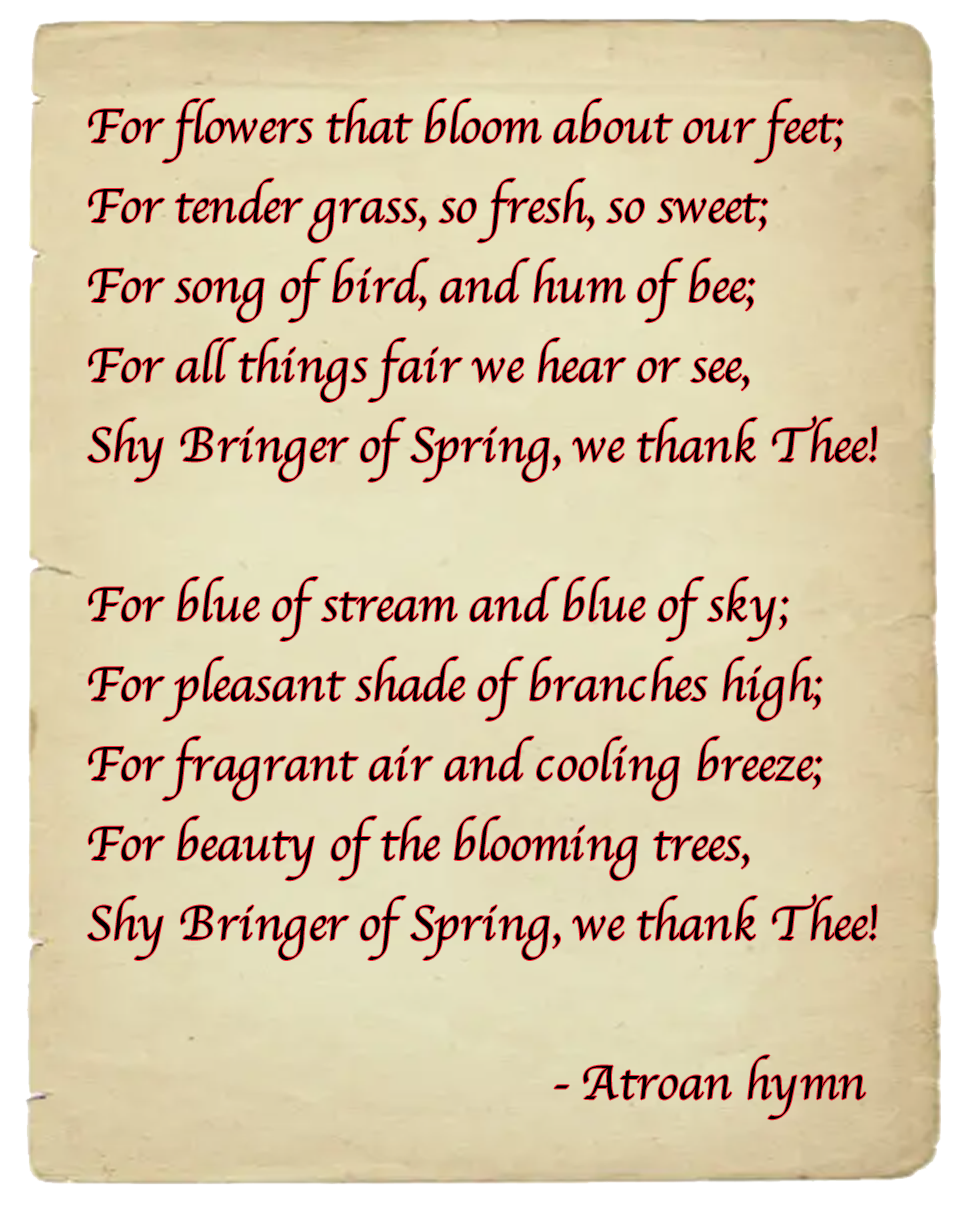Atroa (ah-TRO-ah)
Bringer of Spring, Wind-Daughter, Provider, Shy One, First Sister
Alma is the youngest of the three daughters of Velnius. She is the power of rebirth and the first sister of the seasons to show her face after Telchur has his wintry reign. She brings the warmth back to land after winter's cold grip, causes the crops to grow, and brings the warm winds from the east. She represents planting and self-perpetuation. Atroa is a shy god, rarely communicating to her priests or followers. Her worshipers understand the circle of life that she represents—birth, growth, death, rebirth. The seasons always change, but life and spins always comes again. Atroa assures her people of that.Avatar
Atroa almost never appears in avatar form. A threat to her followers most be very great for this power to set foot on Oerth. When she does appear. Atroa takes the form of a beautiful young woman dressed in a short, green skirt and tunic. A few fresh, green leaves are usually tucked in her blonde hair. Her features are perfect, more elven than human, and her skin is tanned by the sun. Warm breezes constantly play about her hair and clothes, keeping both in motion. She is never armed. Other Manifestations: Atroa most often manifests as a gentle gust of warm wind. Sometimes she lets her followers know she is about by causing grass or greenery to sprout in an unusual place, such as grass growing suddenly in a snowstorm or vines growing out of solid rock inside a building. The demonstrations are rare, however, as Atroa seems reluctant to deal with mortals.The Church
CLERGY: Clerics, Green Daughters/Sons, MysticsCLERGY’S ALIGNMENT: NG, CG, LG
DOMAINS: Life, Nature, Atroan
The church of Atroa is widespread along the routes of the Oeridian migrations to the east. She is widely worshiped in Ull, Ket, Bissel, the Gran March, Keoland, the Ulek States, the County of Urnst, the Great Kingdom (or what's left of it), and in the Wolf and Tiger Nomads lands. Other lands often have small shrines dedicated to the god, though they see little use except in the spring. Many farmers worship her, praying for a good harvest and an early spring. Sailors and sea merchants sometimes pay their respects to Atroa and pray to her for favorable winds to blow their way. The trade winds of the spring and summer which blow from the east are often called "Atroa's breath." Temples to Atroa are usually small, simple shrines or chapels. They are always made of wood and have many windows (most of which face east) to allow the wind to blow through. Carved wooden statues depicting Atroa sometimes stand above the altars. Each chapel invariably has a tower with a bell mounted in it for ringing out the hours. Most of the churches have large gardens. There are two sects of the church of Atroa: the Planterings and the Bearers. The Planterings revere spring, the renewal of life through farming and animal husbandry, and the warmth brought by the eastern winds. These young women and men am hard-working members of the church who use magic and their own hands to see that the yearly crops are planted and readied. They are most active in the early year and spend their winters preparing for the spring again. The Bearers have taken more strongly to Atroa's portfolio of renewal, spreading the word of the god in that light and urging the proliferation of the human race. Almost always women, Bearers revere the family and the propagation of children, and they are often pregnant themselves. Bearers often run orphanages, treating each child as if he or she were the Atroan's own and keeping them well fed, well rested, and loved. They are taught at an early age the importance of Atroa and of life itself. Male Bearers are very rare. Dogma: Atroa's followers believe in the goodness of people. Each new thing is part of the cycle of life. Celibacy is frowned on in the church, and marriage is encouraged for both its members and clergy. Pregnancy is looked upon as "the blessing of Atroa," and priests who become pregnant are seen as the holiest of all. Although there are fewer male than female priests in Atroa's church (about 80% of the clergy is female), they are also respected for their own ability to father children. The church also teaches responsibility. Although Atroa's followers preach renewal and rebirth without constraint, they also believe in nurturing what has been planted. Allowing a plant to die or a child to go hungry because of neglect are both seen as great sins. Day-to-Day Activities: Priests of Atroa are most active in the spring, when they take part in the planting of crops. Atroa has no reluctant followers. Everyone spends some time in the fields planting seeds, pulling weeds, digging canals, or maintaining the fields. The clergy of the church tend to the fields throughout the spring and summer, and many of them become quite learned in the areas of crop rotation, fertilization, irrigation, and agricullure in general. Many priests of Atroa (especially bearers) are midwives. Holy Days & Important Ceremonies: Morning prayers and thanks to the Wind-Daughter for another day and another season are important to the clergy of Atroa. Working in the fields is considered prayer, and the mantra 'Blessed be this ground" is often recited while doing so. Priests bless newly born children and newly formed families, and they preside over funerals, preaching that even the dead will someday come again. The holiest day of the year is the Spring Feast, which falls on the 4th day of Growfest (Spring Equinox), This is a day of prayer, rest, reflection upon the last year and thoughts of what the new year will bring. Almost as important is the entire festival of Growfest, when the clergy of the church are busy planting. The week is filled with days full of back-breaking work, followed by evenings of song, prayer, food, and drink. Only Godsday, the 4th of Growfest, is set aside as a day of rest during this time, breaking the planting into two short half-weeks and making the work seem easier for all involved. Major Centers of Worship: the Temple of the Children is the largest temple of Atroa in the Flanaess. Situated in the city of Gradsul in the Kingdom of Keoland, this large, wooden structure competes with the Foaming Tower (the temple of Osprem, also located in Gradsul) for followers. Since most sailors want the blessings of both gods, the churches have many members that belong to both. The Temple of the Children also serves as one of the greatest orphanages in Keoland. The Trade Wind Chapel in High Mardreth in the County of Urnst is the second largest Atroan temple. This place caters to sailors and ships and has grown since the Greyhawk Wars as more shipping bypasses Nyrond for the Ursnst States. Affiliated Orders: Atroa's church has no affiliated orders. Priestly Vestments: Clergy of Atroa usually wear simple farmers' clothes and green wide-brimmed hats tied tightly to their heads. Sometimes they wear green cloaks covered with red dots, and they almost always wear leather gloves to work in the fields. Formal dress includes green, knee-length robes with short sleeves (usually halfway between the wrist and elbow in length) and hoods. The clergy believe that whatever they wear, it should not get in the way of the day to day business of work. Adventuring Atroan clergy usually dress like farmers, though often wearing green, wide-brimmed hats and green and red cloaks. Atroa's holy symbol is worn prominently at the neck or on the hat band. Clergy who choose to wear armor usually choose plain, unadorned leather armor.
Atroan Domain
Clerics of Atroa may select the Atroan Domain instead of the Life or Nature Domains. Such clerics are known as Green Daughters or Sons.DOMAIN SPELLS
| Cleric Level | Spells |
| 1st | feather fall, speak with animals |
| 3rd | lesser restoration, locate animals or plants |
| 5th | cloudburst*, plant growth |
| 7th | grasping vine, hallucinatory terrain |
| 9th | commune with nature, greater restoration |
Year's Youth
When you choose this domain at 1st level, you get a +2 bonus to all saving throws against aging, withering, or rotting (including the rotting fist attack of a mummy).Weather-Wise
Also at 1st level, you can predict the weather in a three-mile radius from your position. Your prediction will be 100% accurate (although magical influences such as the spell control weather cannot be accounted for), and you will see the weather up to 2 hours into the future for each cleric level. Thus, when you use this power at 4th level, you will be able to see the weather 8 hours in advance. You can do this as often as you wish, but the process takes a full minute to complete.Channel Divinity: Turn Undead
You have the ability to turn undead at 2nd level, as described in the Player’s Handbook. You can also destroy undead at 5th level.Channel Divinity: Kiss of the East Wind
Starting at 2nd level, you can use your Channel Divinity to cast the spell gust of wind. This does not require that you prepare the spell, or that you expend a spell slot to do so.Renewal of Spring
Starting at 6th level, you regenerate one hit point of damage every 10 minutes.Divine Strike
Starting at 8th level, you gain the ability to infuse your weapon with divine energy. Once on each of your turns, you can cause your weapon to deal an extra 1d8 thunder damage. When you reach 14th level, this increases to 2d8 hit points.Vessel of Regeneration
Starting at 17th level, you can cast the spell regenerate once per day. No preparation is required, and you need not expend a spell slot to do so.Cloudburst
3rd level transmutationCasting Time: 1 action
Range: 50 feet
Components: V, S, M
Duration: 1 minute
This spell will condense all of the moisture in the air into a small cloud, up to 50 feet away from you, which will immediately begin to pour drenching rain down on anyone beneath it. The cloud itself can be up to 60 feet above the ground, and will be 30 feet in diameter. Anything under it will be completely soaked, as an inch of water will fall in the single minute the cloudburst exists; this will ruin any unprotected magic scrolls and other papers. Small fires will be instantly put out, medium-sized fires (campfires, large braziers, etc.) will be extinguished after half a minute, and large fires under the cloud will be extinguished by the end of the round. Even magical fires will be affected, but permanent magical fire (such as a flame tongue sword) will reignite once the cloudburst is over. Large magical fires (fireballs, flame strikes, walls of fire) will generate large clouds of steam as they are extinguished, four times as large as the magical fire’s normal area of effect. Lastly, if this spell is cast in hot, arid conditions, the spell will only last half as long, and will not put out large magical fires. If cast in very cold conditions, 3 inches of snow will fall in but a single minute, with much the same effect as the rain described above.

Lesser God
Oeridian Pantheon
TitlesBringer of Spring, Wind-Daughter, Provider, Shy One, First Sister Sphere of Influence
Spring, east wind, renewal Alignment
Neutral Good Symbol
A heart with the rune of air at its center, or a kara tree full of red, ripe fruit Home Plane
Beastlands
Brux/Grove of Perpetual Spring
Superior
Velnius (father) Allies
Ehlonna, Phaulkon, Sotillon, Velnius Foes
Telchur Worshipers
Farmers, people with large families, sailors, midwives Worshiper's Alignments
Any good Domains
Life, Nature, Atroan
Children
Atroa's symbol can be either a heart with the rune of air at its center or a kara tree full of red, ripe fruit





Comments